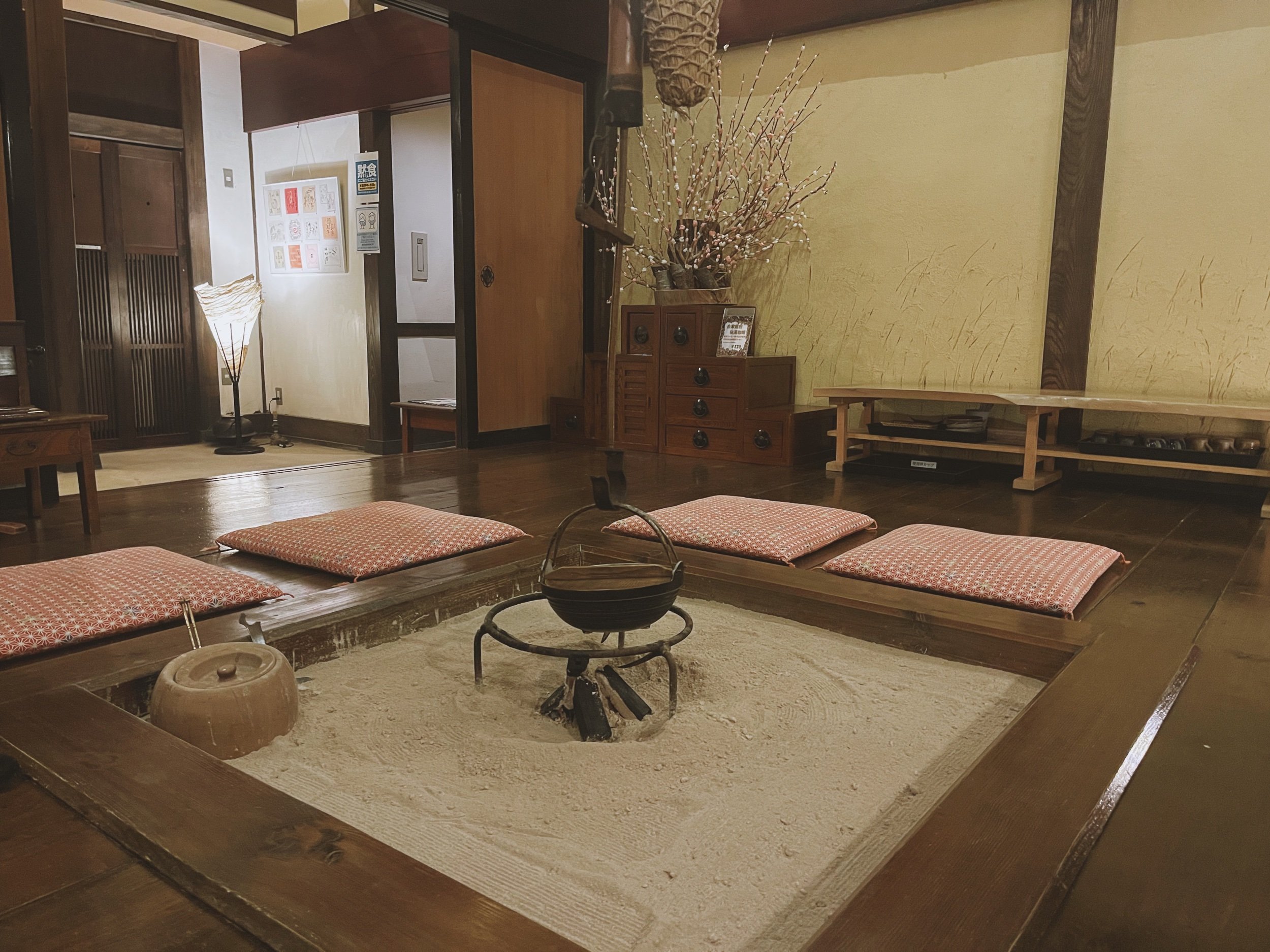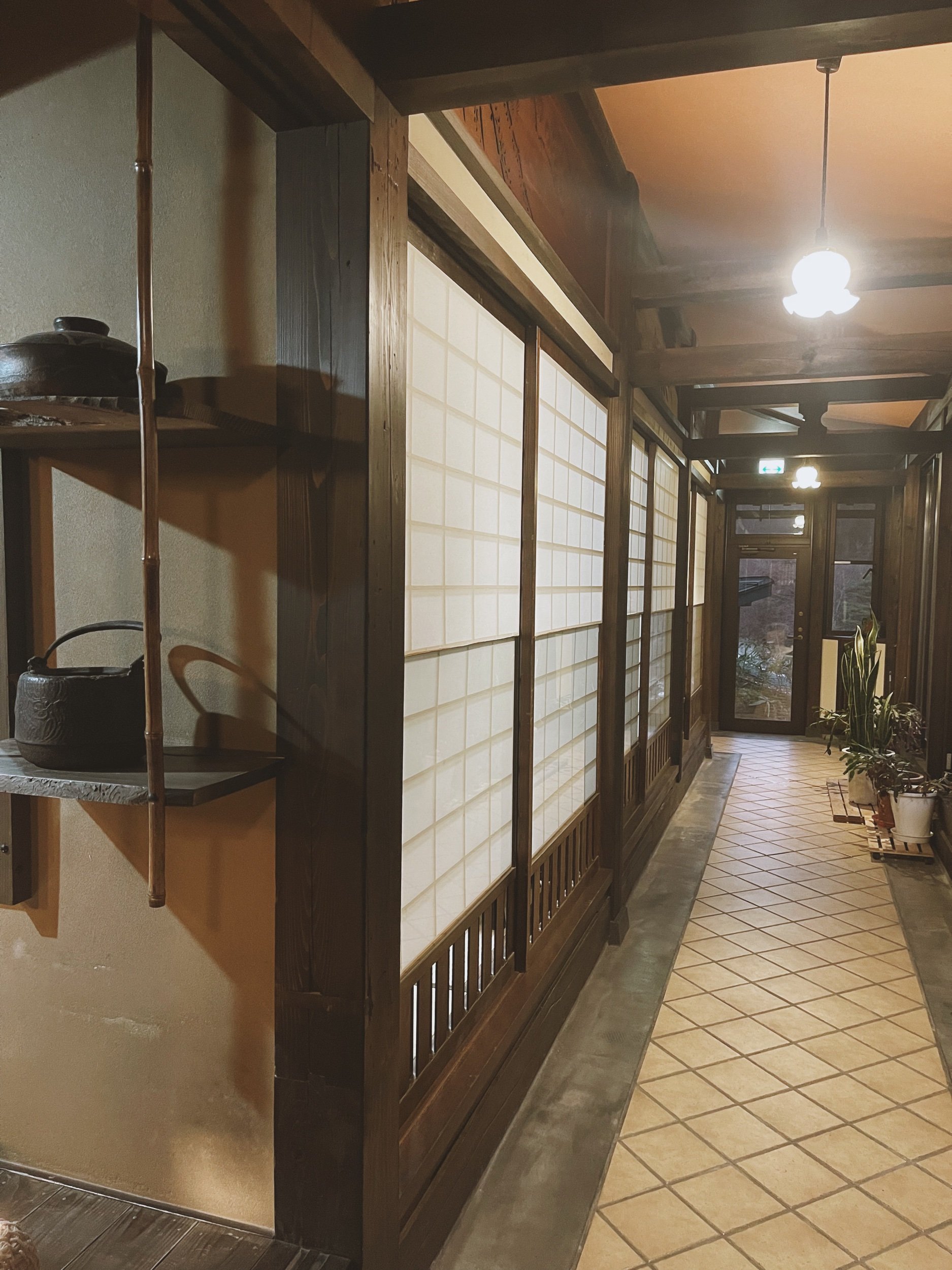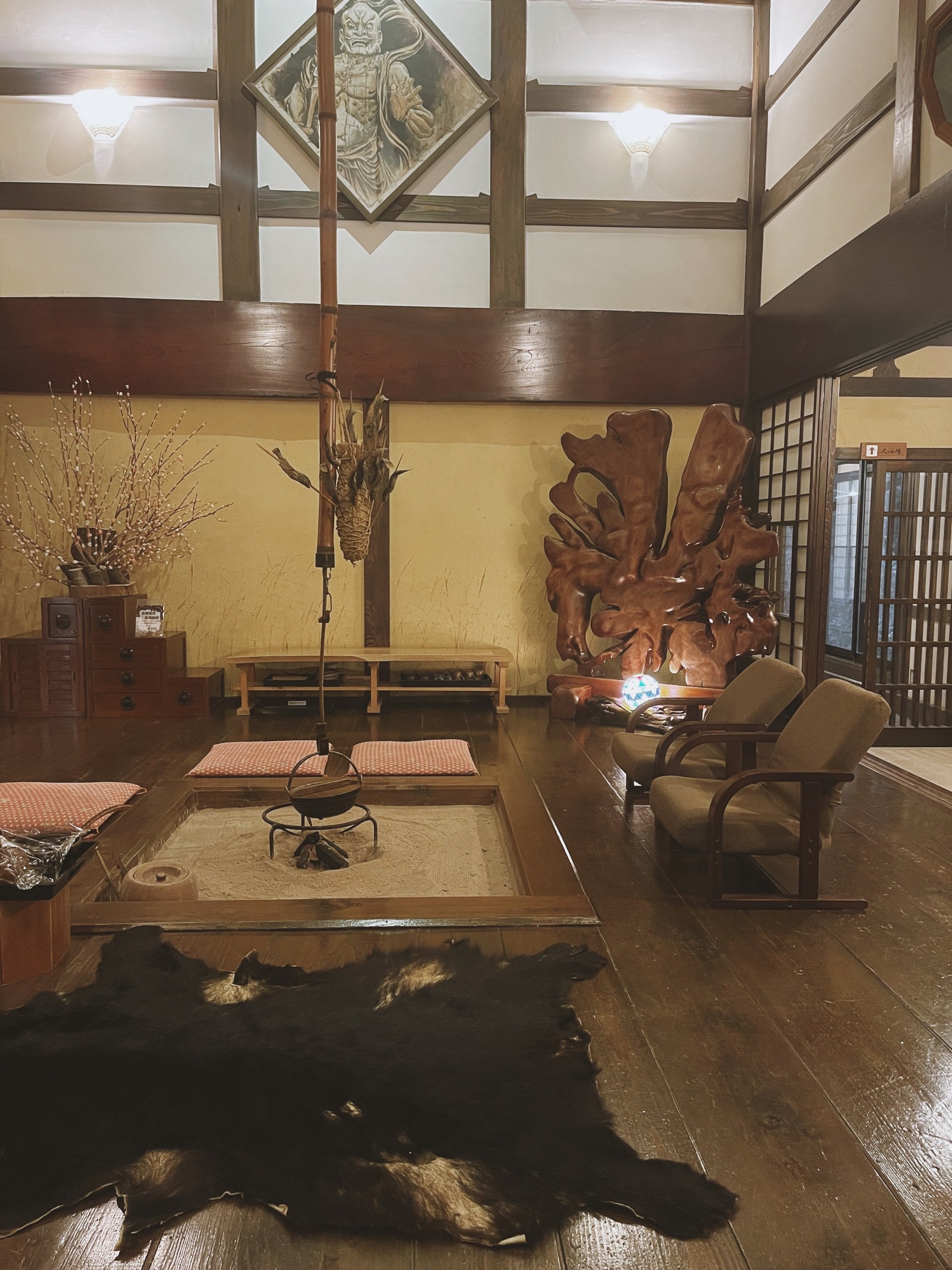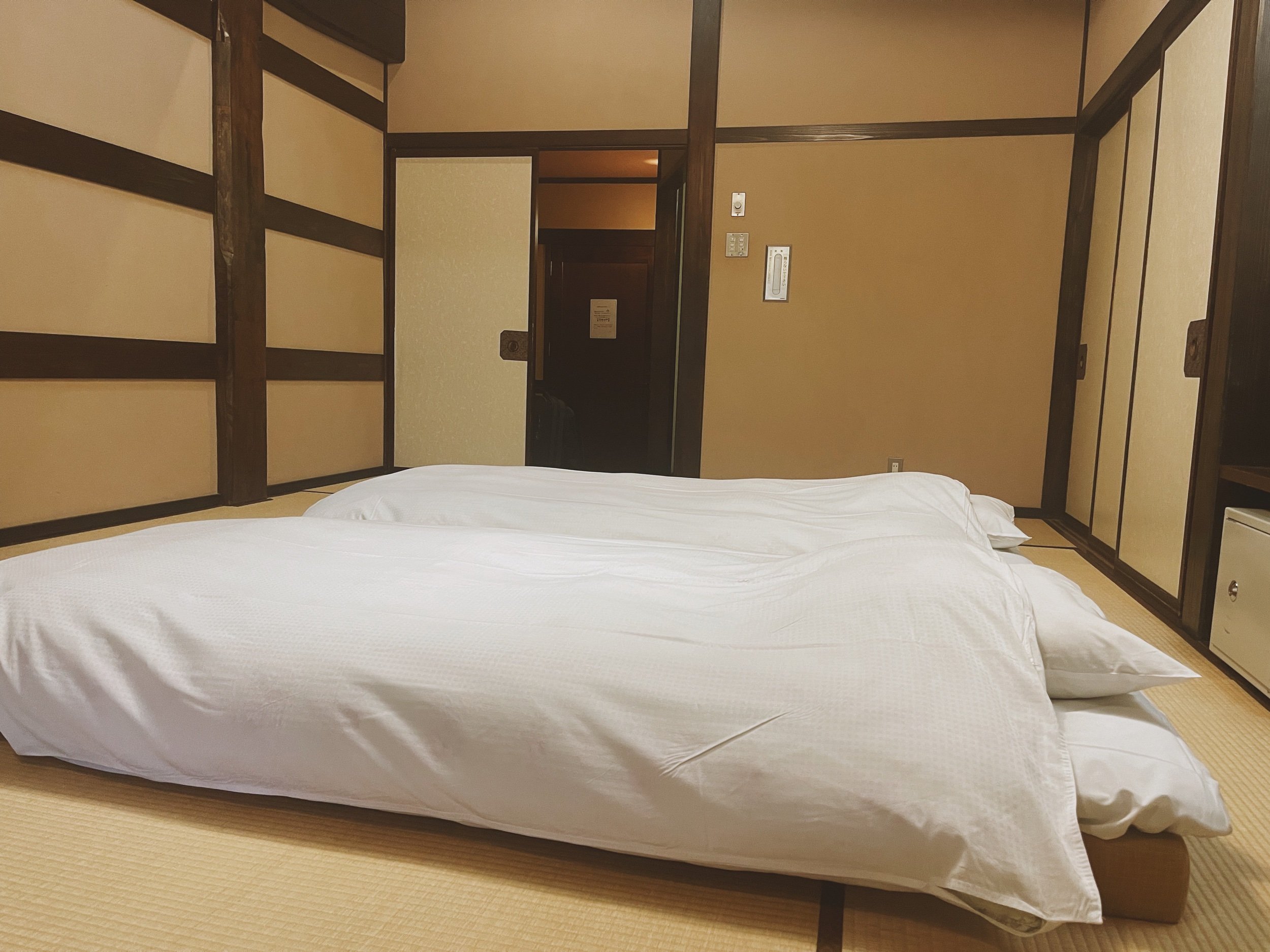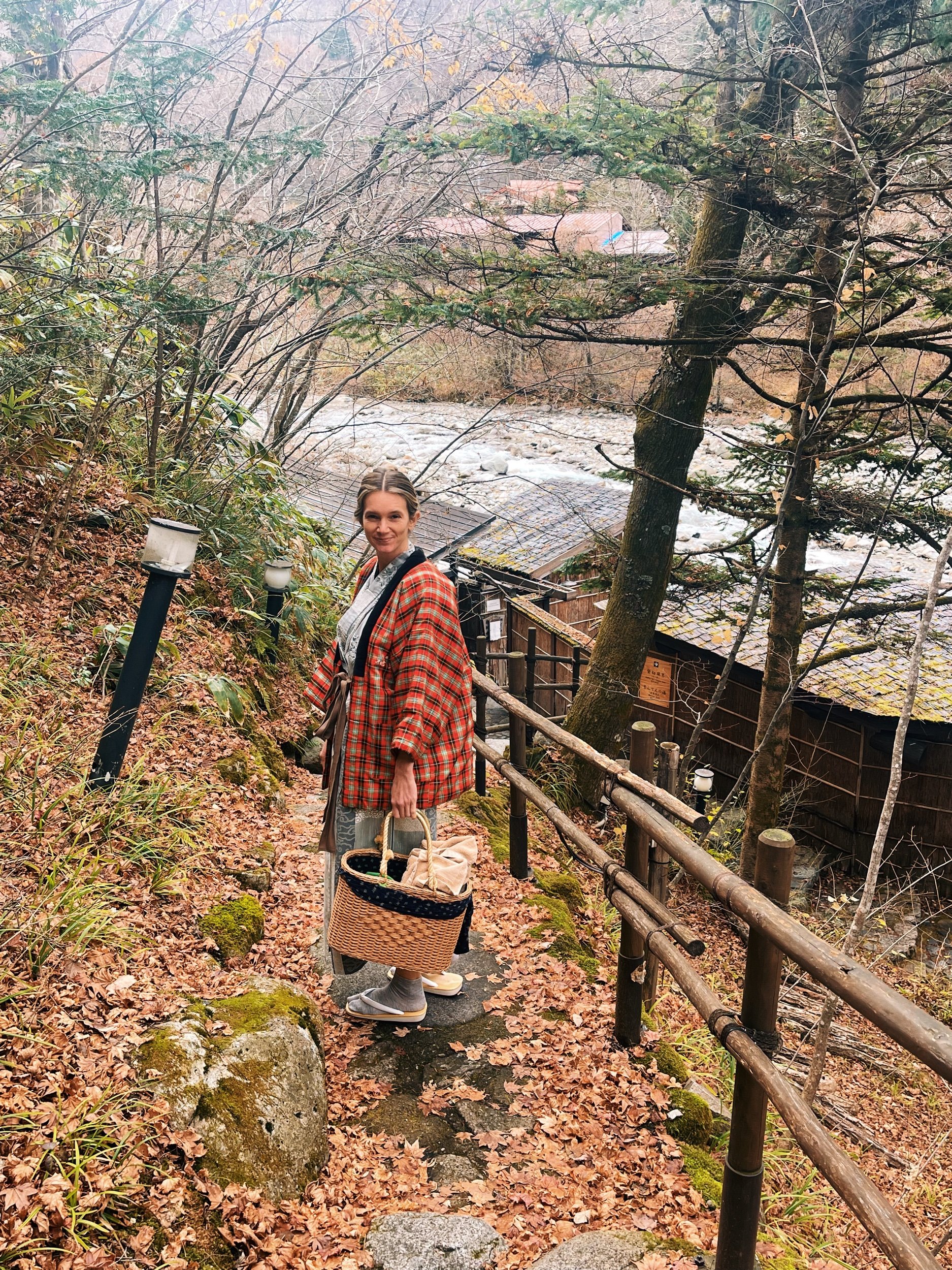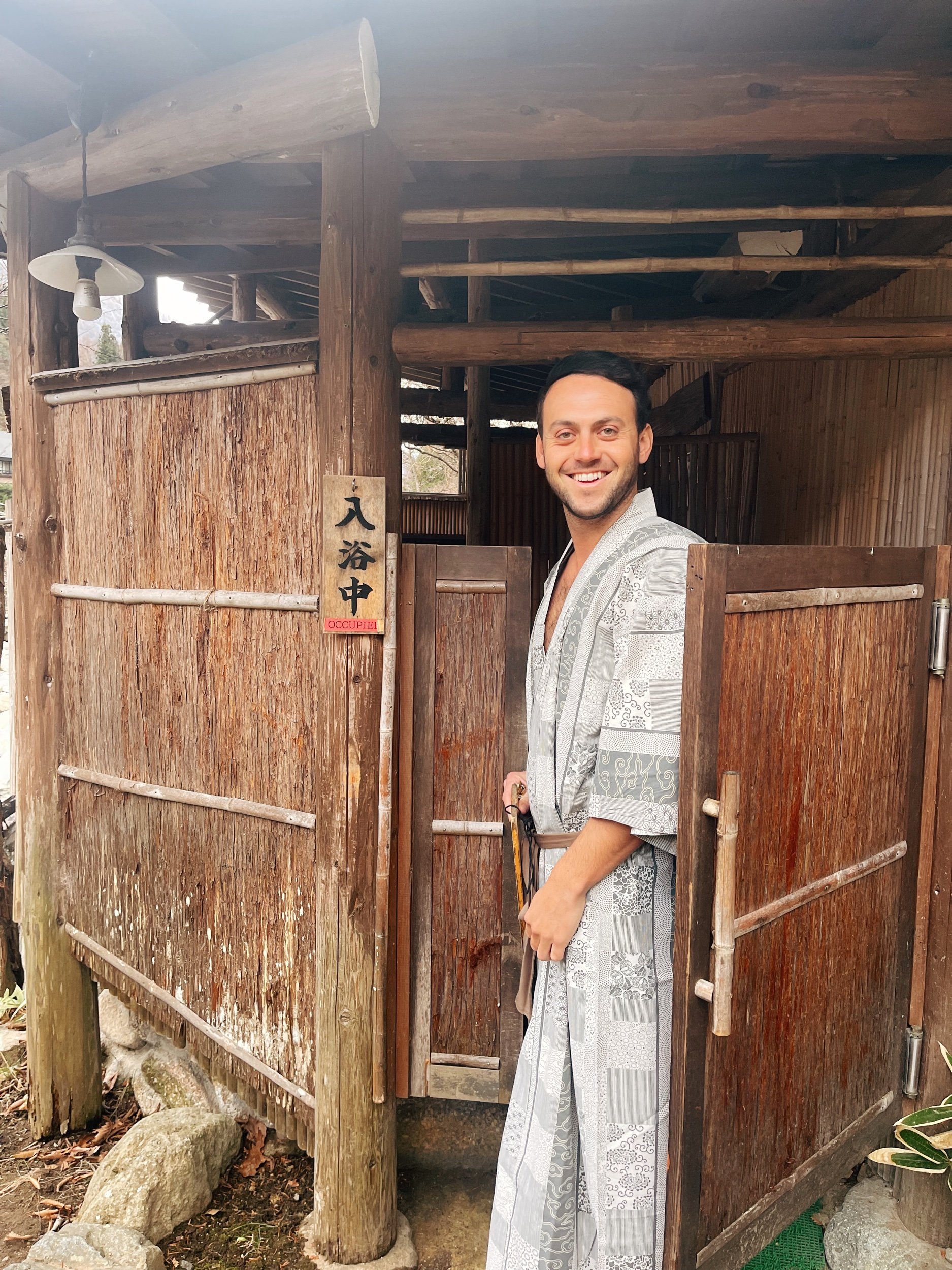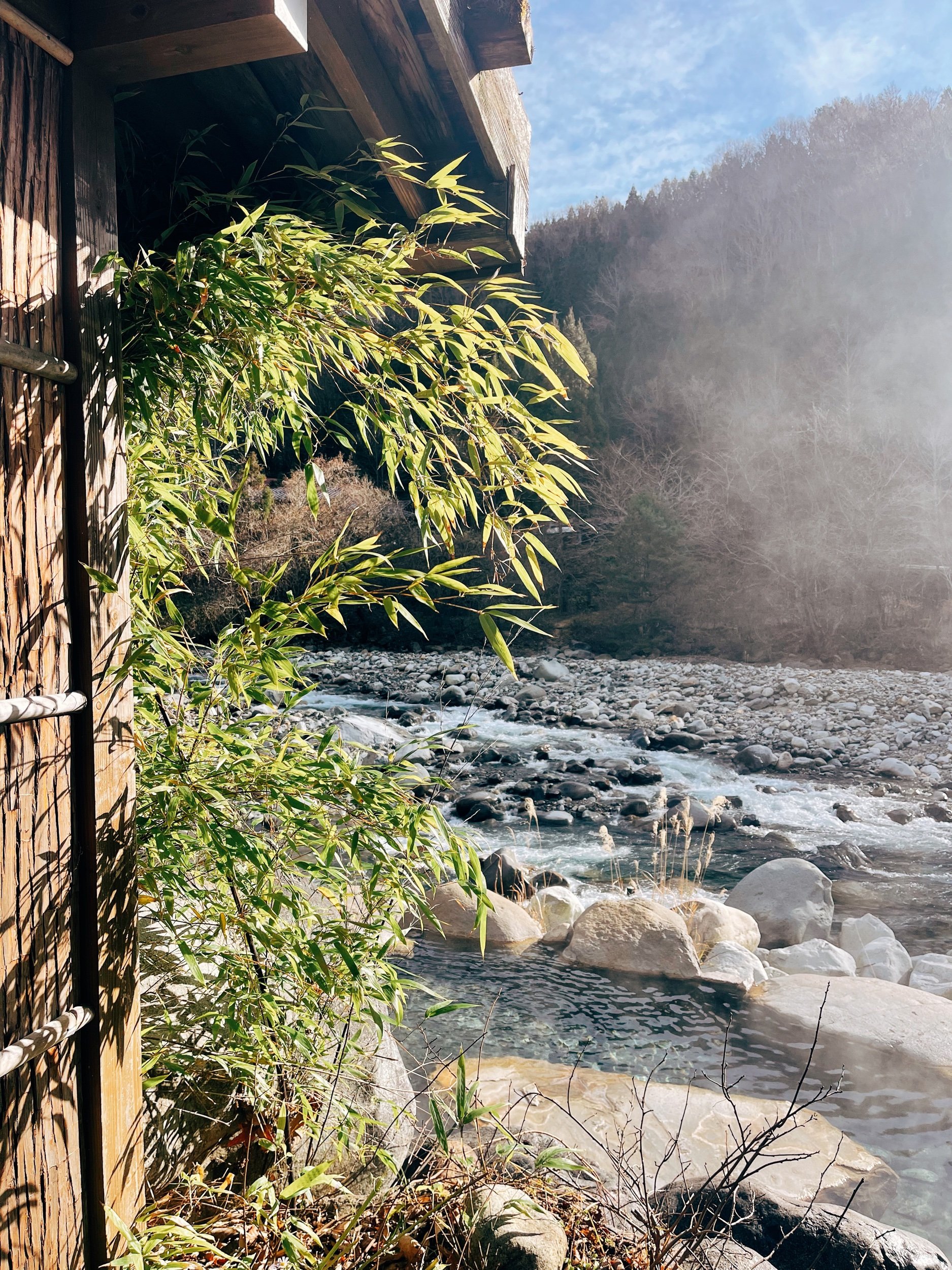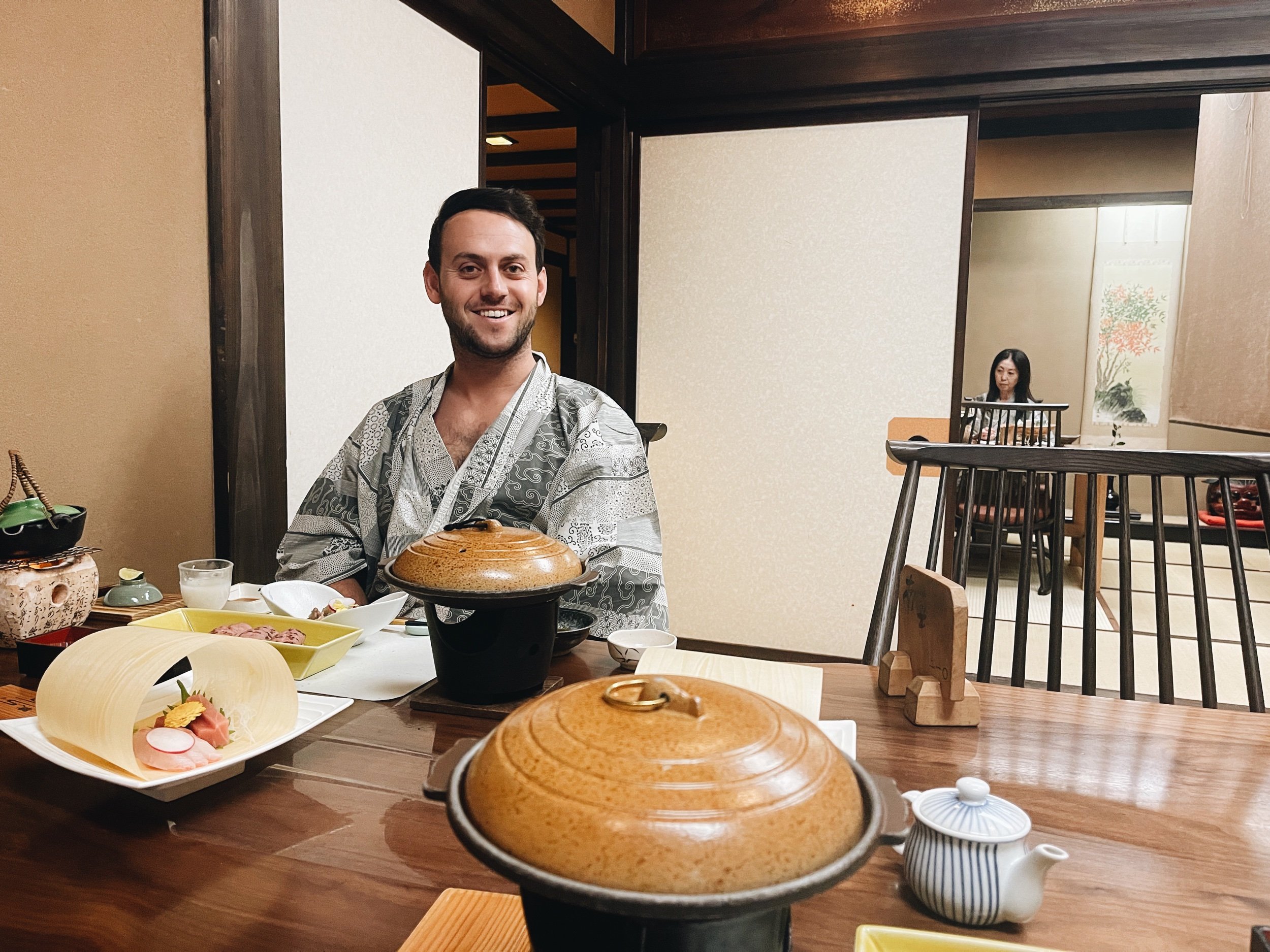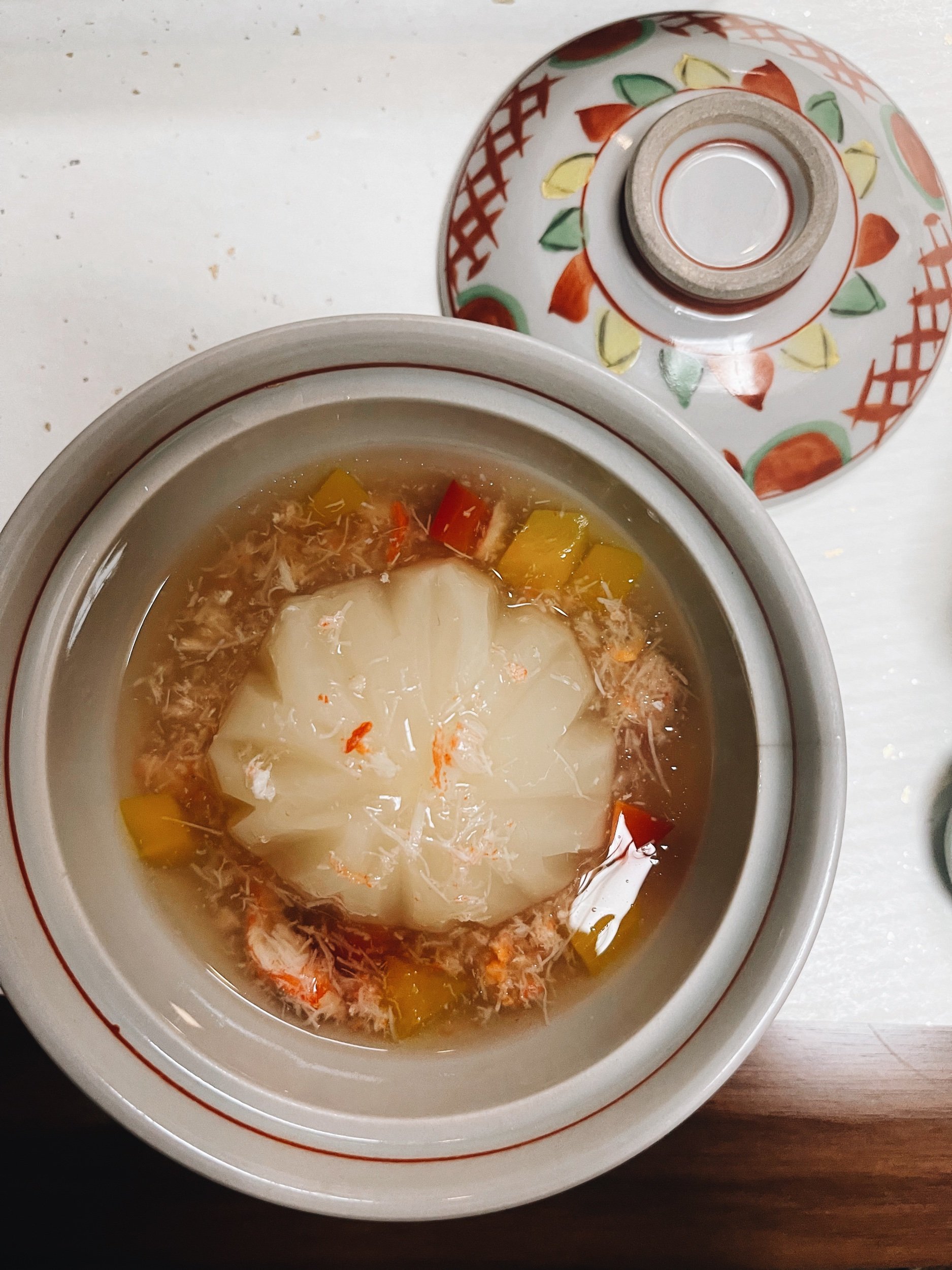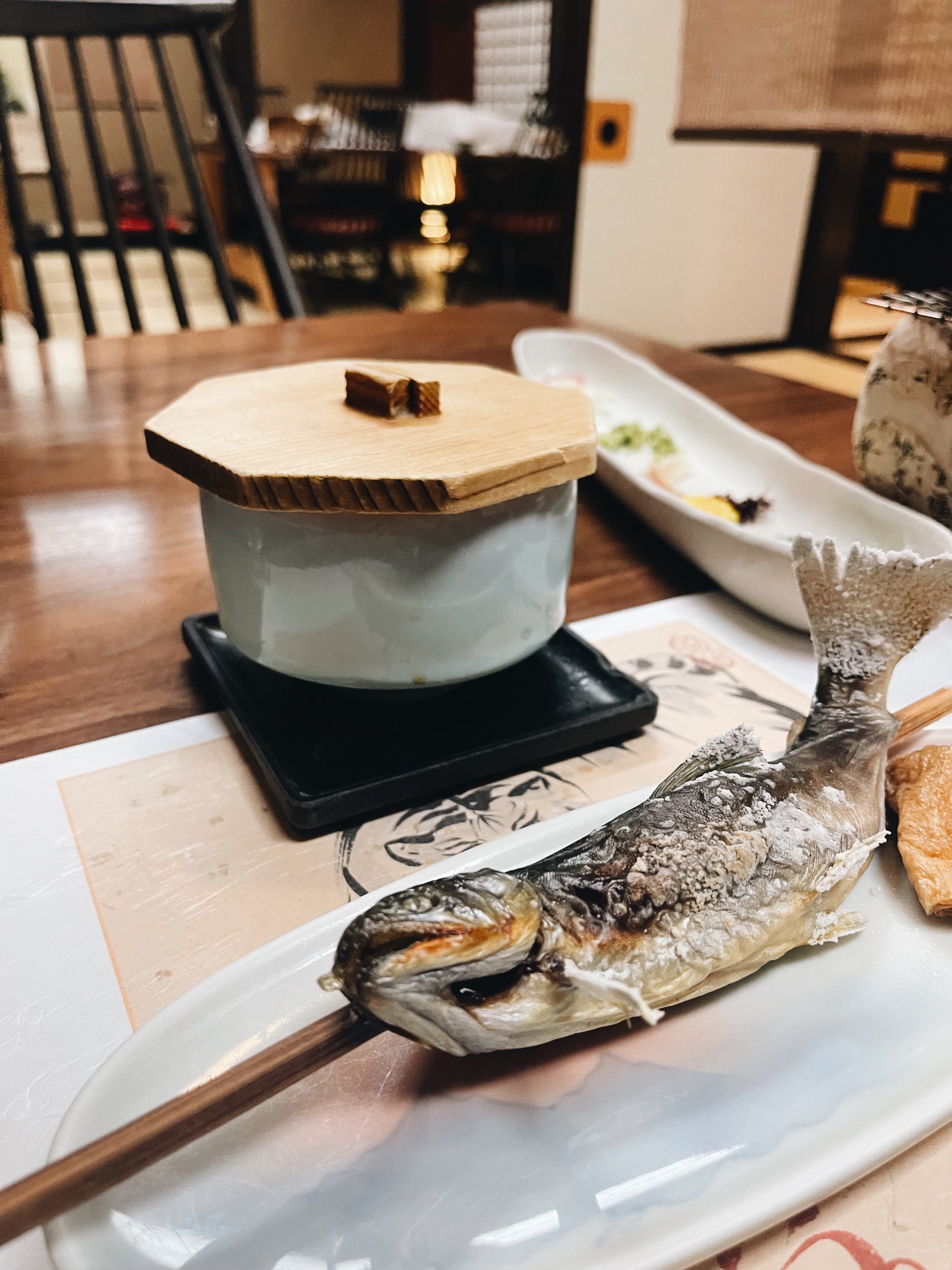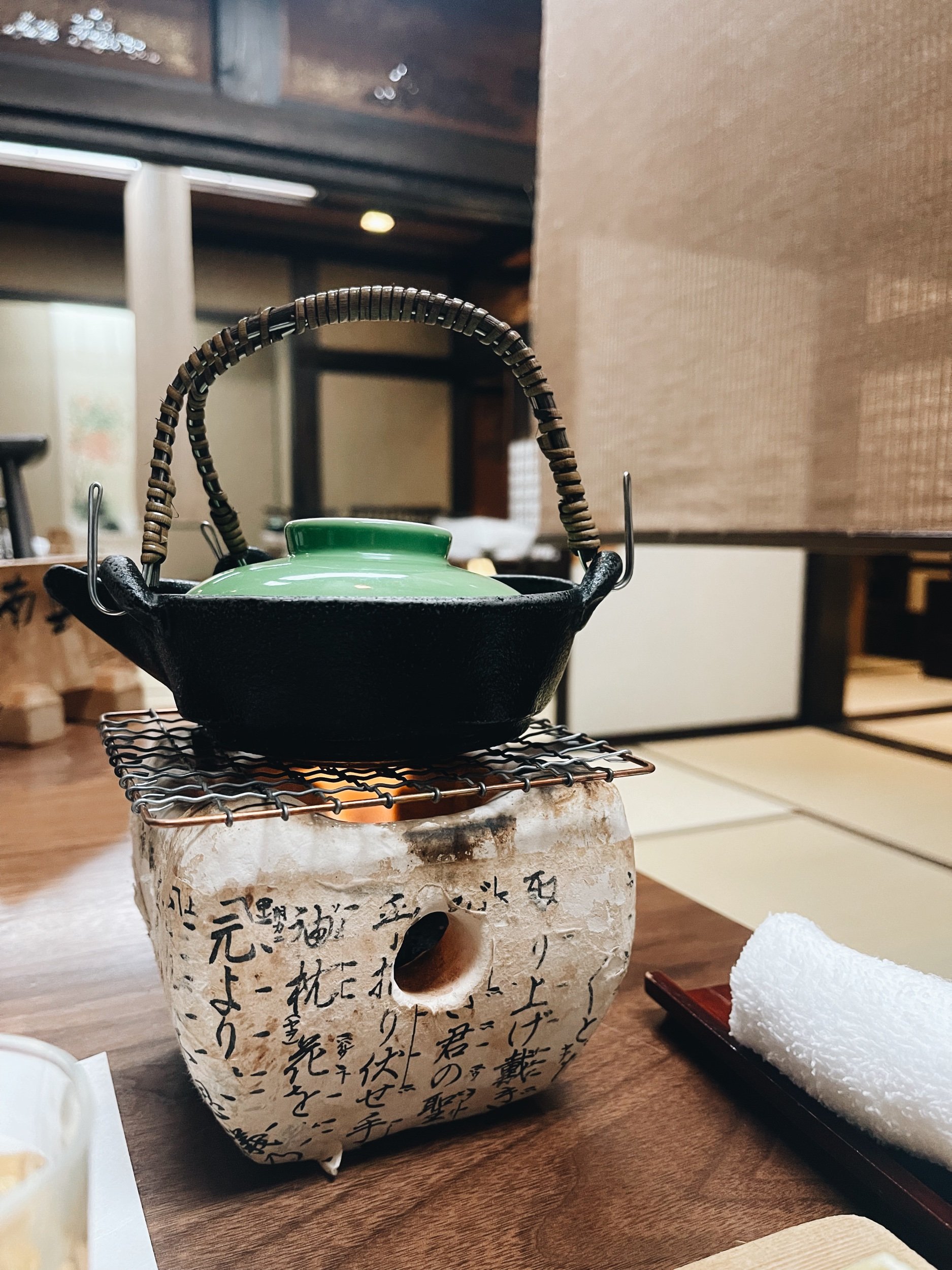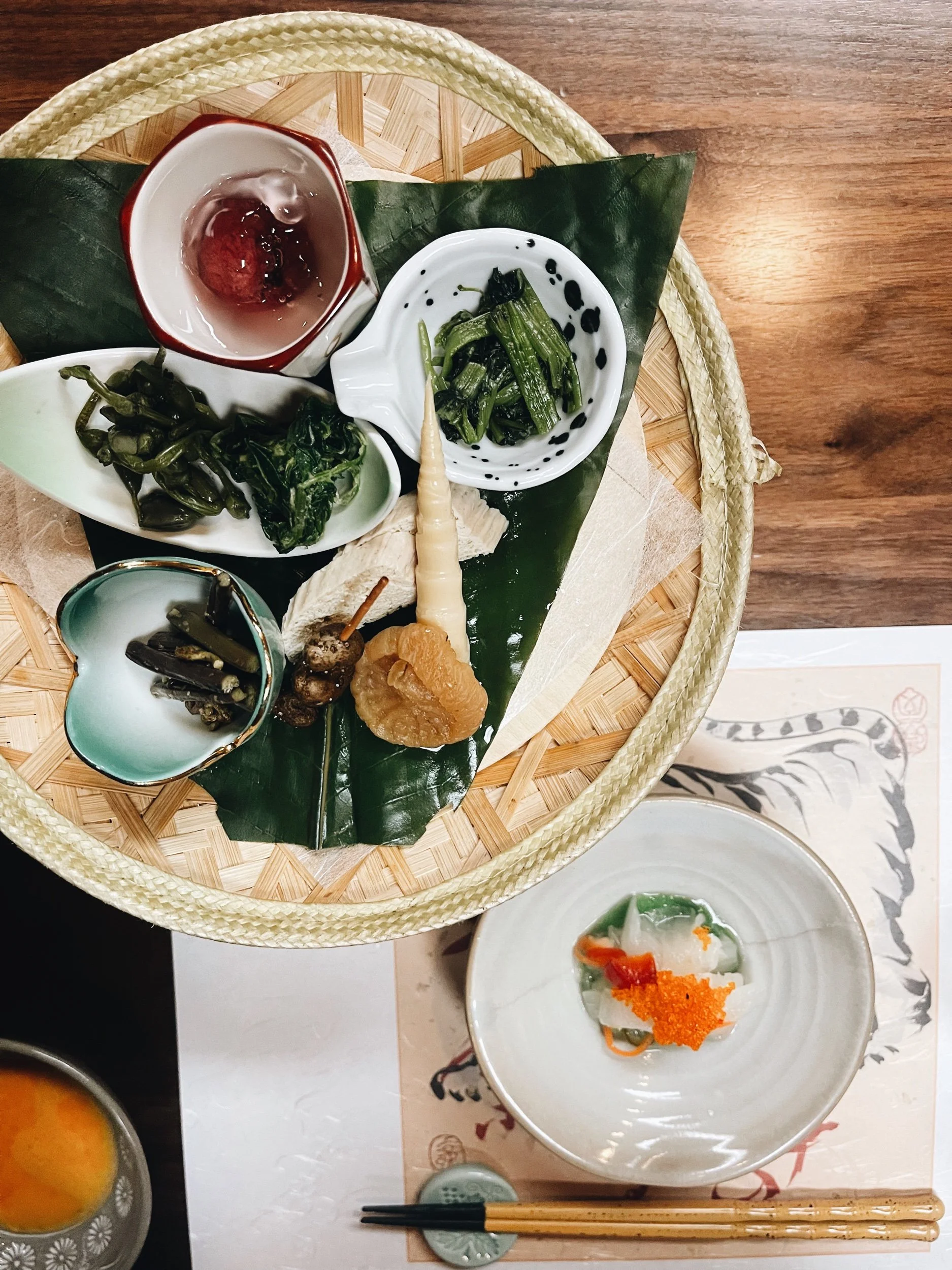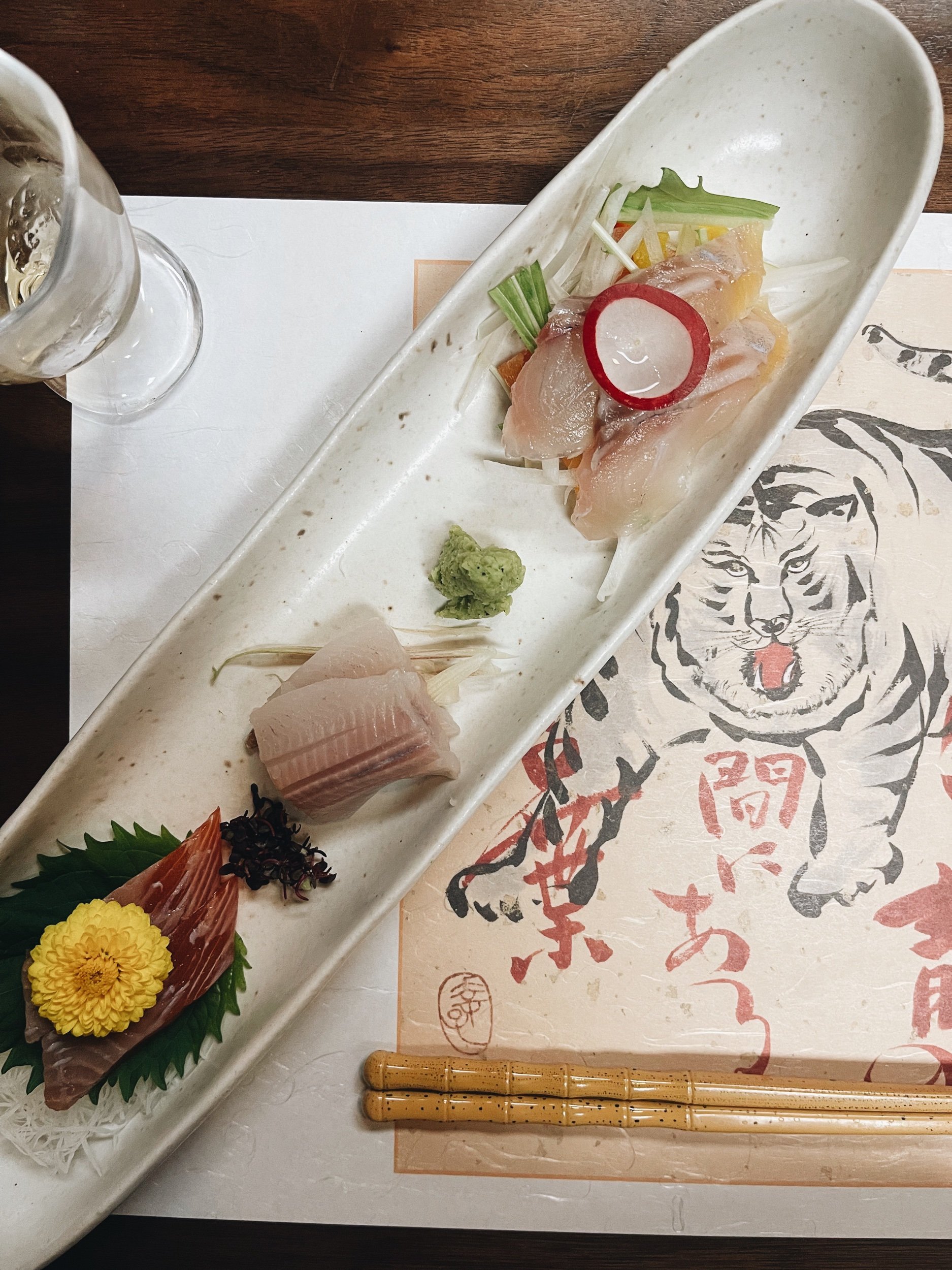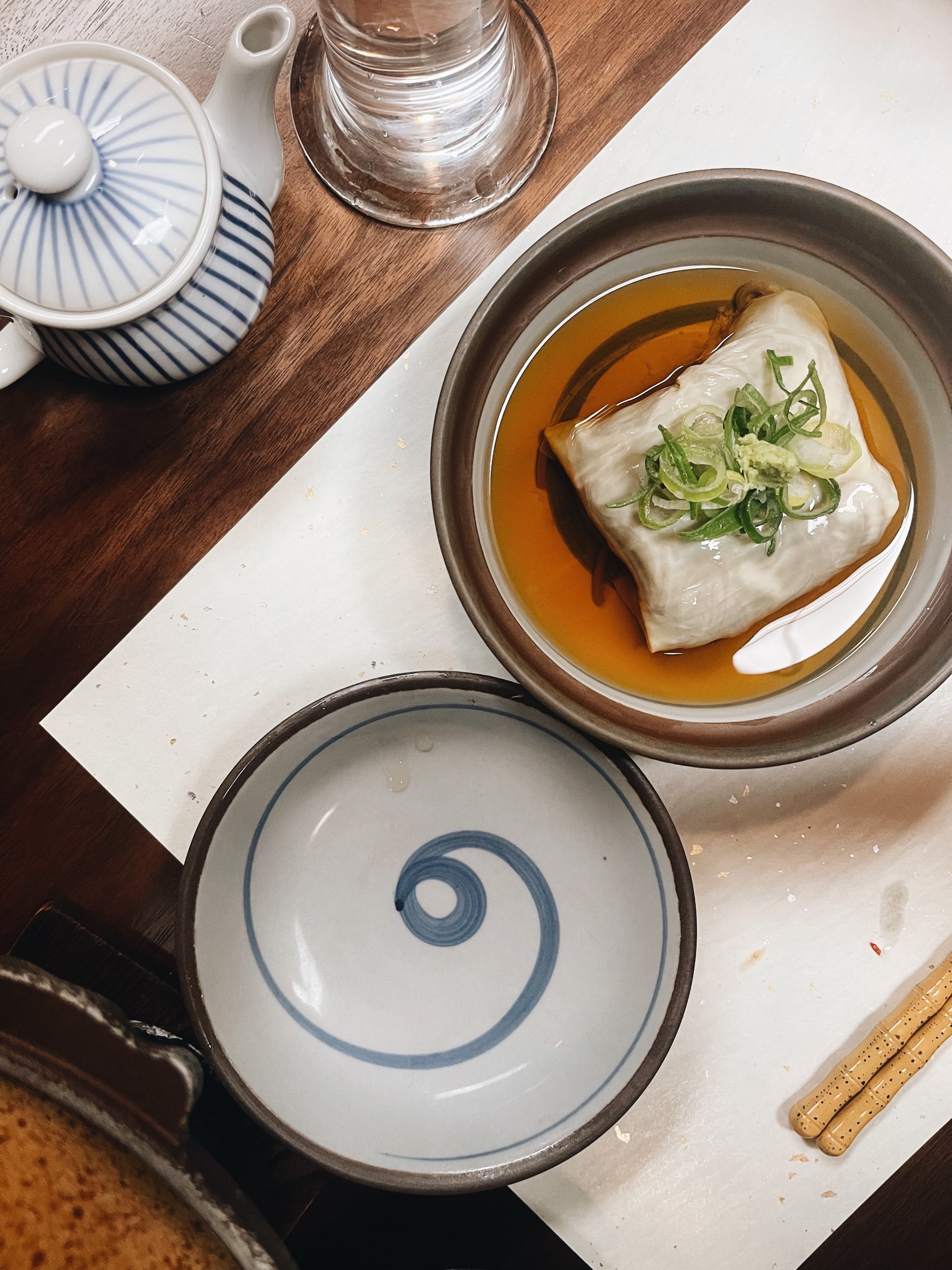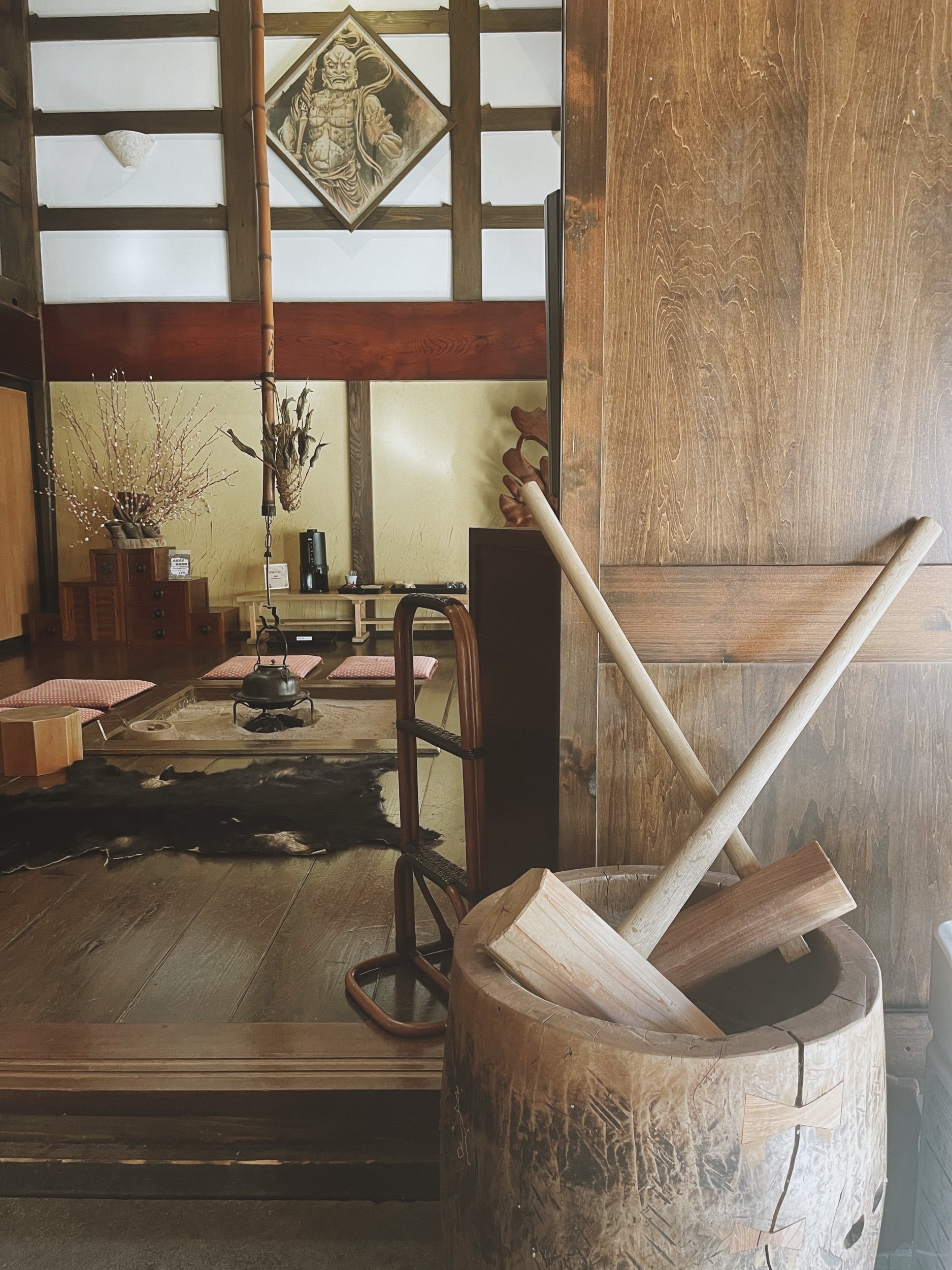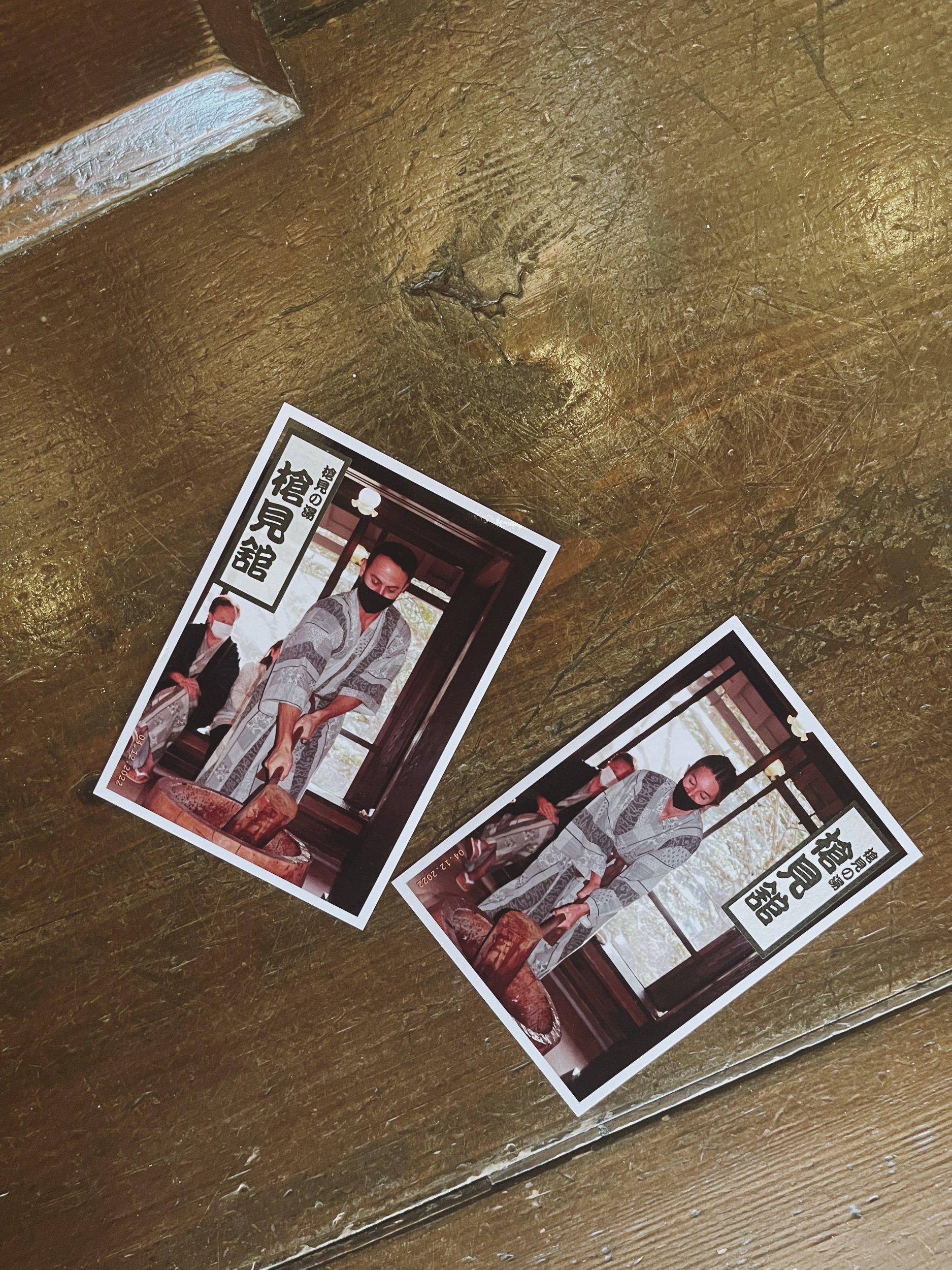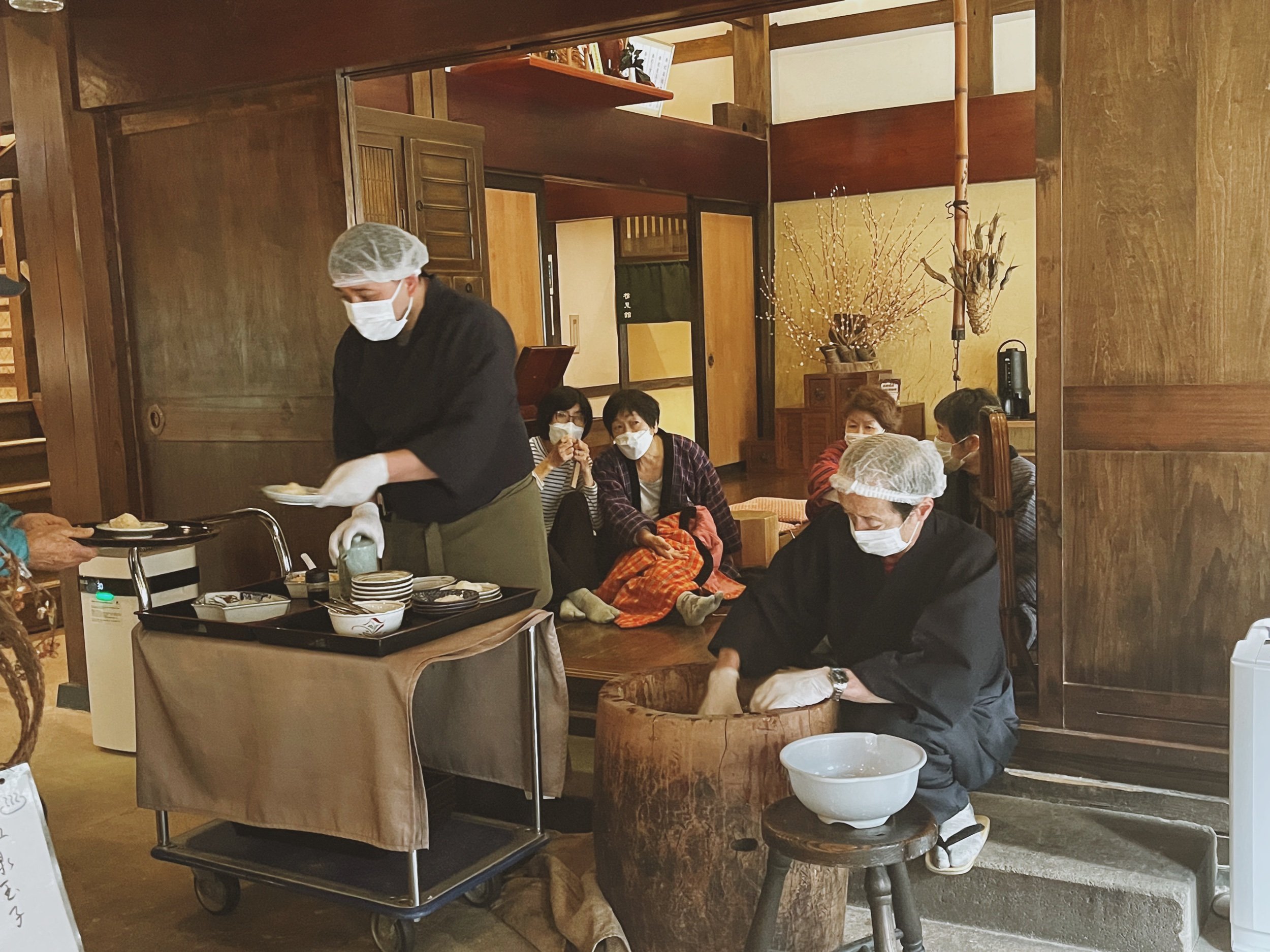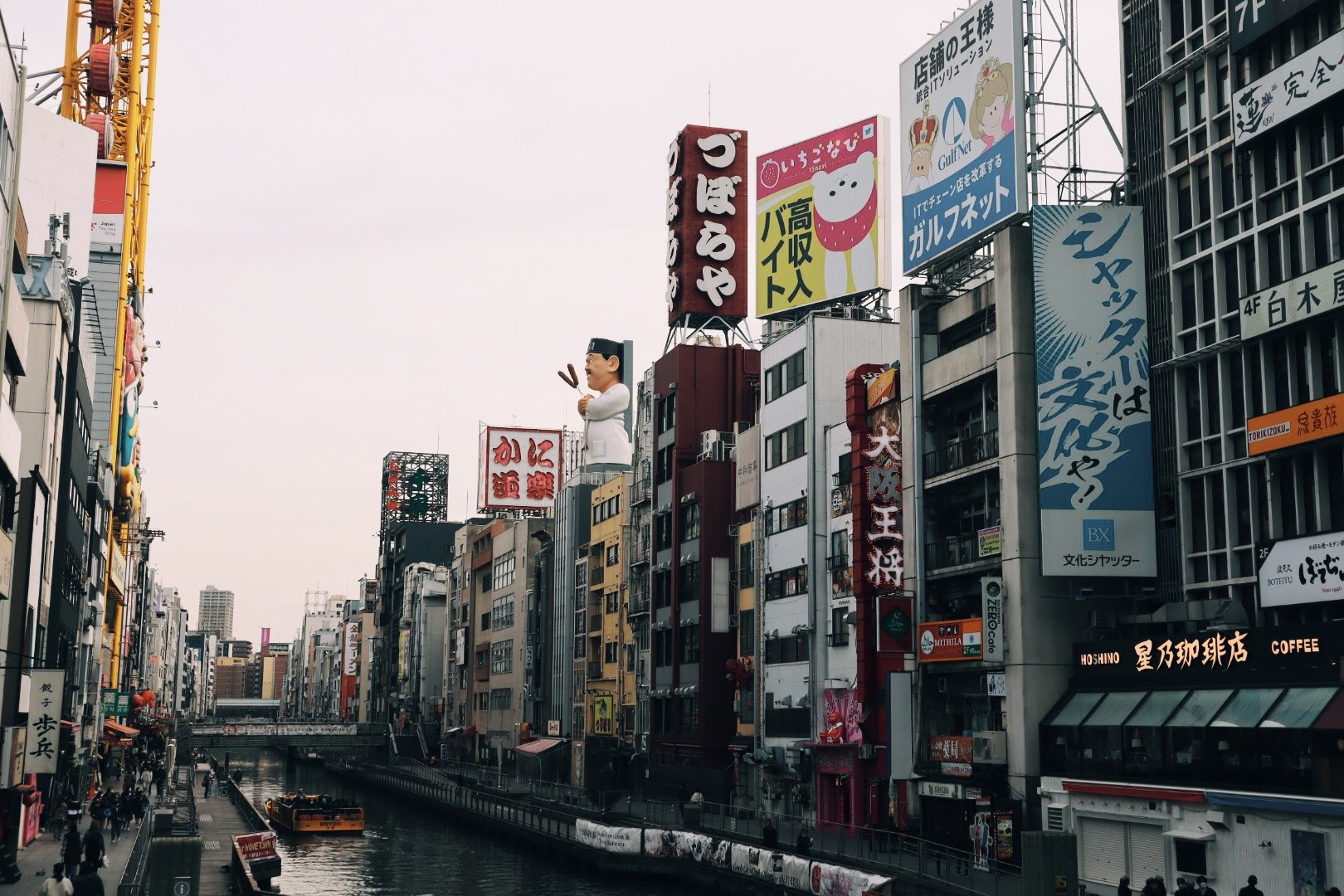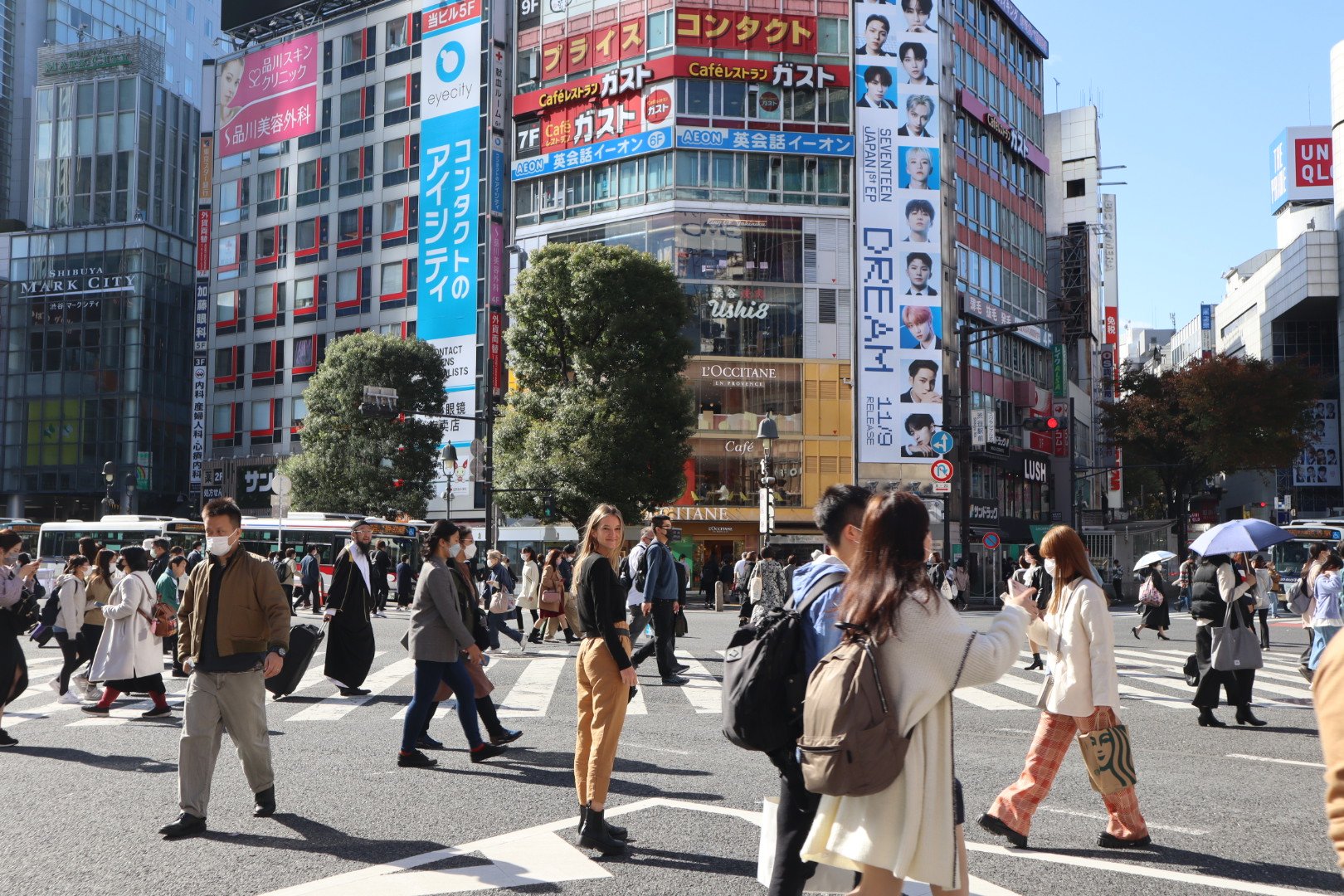Memories in a Ryokan
Finding tranquility in Japanese traditions.
The smell of palo santo danced around my nose as we stepped inside Shinohotaka Onsen Yarimikan, a ryokan tucked up against Mount Hachimari four hours west of Tokyo. After ten days in the city, we craved a slower side of Japan. A place that was peaceful and serene. Enter the ryokan - a traditional Japanese inn that features tatami-mat rooms, floor beds, and onsens (also known as natural hot springs). Historically, ryokans were places for those to rest and reflect. Traveling samurais and Japanese nomads sought out this tranquil refuge dating back to 705 AD. Today, both Japanese weekenders and global travelers can book a two-day experiences to completely detach from the country’s frenetic pace.
Our host warmly greeted us with a gentle wave and motioned our shoes off. We wouldn’t be seeing them for the next 48 hours. Fabric slippers were expecting us at the front door, so we slid our feet in and shuffled to the main entry room. A small fire pit sat in the the center with a black kettle harnessed from the high arched ceiling. Remnants of heat seeped from the flames warming the room - and my toes. Opposite the fire pit, a majestic view of the river flowing at the base of the mountain dazzled our senses. As I gazed out, I noticed dried persimmons dangling from bamboo beams outside. We later learned that this was hoshigaki, an old preservation method developed to sustain fruit throughout the winter. It also symbolized longevity and good luck in the Japanese culture.
Our host was a soft-spoken Japanese man with a gentle demeanor. Speaking little English, he finished checking us in and guided us to our room. I slipped off my slippers and felt the soft straw of the tatami mat on my toes. Beyond our door lay two plush mats and an alcove featuring two reclining chairs and tea ready for sipping. A grand window showcased the outdoor scenery with sliding bamboo panes that had been slightly cracked open. Intermittent bursts of wind brought whirling sounds of the river echoing through the room, creating the calming melody for our stay.
After a crash-course lesson in onsen etiquette, we changed into our yukata or ‘bathing clothes’ in Japanese. A yukata is the casual cousin of a kimono and we were expected to wear this everywhere we went on the property. It took a few tries to get it securely (and appropriately) fastened but finally we were ready to leave our room. To brave the cold, I grabbed my toe socks, platformed sandals, and the yukata coat, a fluffy Japanese jacket that rivals any American fashion trend.
Walking step by step along the stones, we made our way through the trees that draped over the ten different onsens for guests to enjoy. These naturally-occurring hot springs sat right along the river, surrounded by bamboo and large stone. With the water temperature hovering around 40°C, the hot springs contained an abundance of minerals yielding therapeutic properties. Each hot spring on the property possessed different features. Some were private and therefore much smaller in size, like tiny hot tubs. Others were larger, gender-mixed onsens where stones acted as small seats in the water. We entered a private onsen guarded by bamboo walls and took in the grand view of the river. Then we rid our yukatas.
Dipping a toe into the water sent immediate heat through my body. There was a slight burning sensation from the drastic temperature change of the frigid outdoors. I took a deep breath and made my initial plunge, allowing the heat to infiltrate. The steam rose up like a soft, hissing cloud as I gazed out onto the hazy landscape. We sat in silence and watched the clouds roll by. At one point, a tiny opening in the sky let in rays of sunlight and small traces of the mountains beyond could be seen in the distance. In just ten minutes, my mind felt clear and quiet. There was a gentle release of muscle tension throughout my body. My skin felt smooth and silky. The chaotic craze of Tokyo had transformed into idyllic rest. This, I thought, was pure bliss.
A simple pattern followed the rest of our day - soak, read, rest, tea. We made transitions from activity to activity slow and intentional, soaking in the moment. And before we knew it, the sound of bells chimed signaling that the day was over. Time for dinner.
We walked into the dining room and politely nodded to the group of Japanese women that were in town for a girls getaway. We found our seats and waited for the main event. The meals at ryokans are infamous - some even receive Michelin stars. But the sheer volume of dishes laid out on the dark wooden table even exceeded our wildest expectations. Right away, small ceramic plates of Japanese pickles and long trays of sashimi filled our table. We tried grilled salmon, Japanese hot pot, skewered whole fish, grilled miso, and other dishes that I struggled to pronounce. It was an extravagant, completely engulfing experience. Many Japanese people - particularly in Okinawa - practice ‘hara hachi bu’ meaning only eat until you’re 80% full. But this rule didn’t exist here. We were definitely at 110% when we left that meal and were thankful for our XL yukatas. After waddling back to our rooms, we found ourselves sound asleep on our mats within 15 minutes.
In the morning, we woke to the first snow of the season. A light blanket draped over the roof and occasional winds would ignite fierce flurries of snowflakes. We had just enough time for one last morning ritual - soak, read, rest, tea - then a high pitched bell echoed down the halls at 9 AM sharp, signaling Mochitsuki, the ceremonial tradition of pounding mochi.
We congregated in the living room where two men gathered around a wooden mallet - or ‘kine’ - and a large mortar - ‘usu’ - propped on a table. Slapped in the center was a translucent, creamy blob ready to be pounded. Guests watched as the men took turns pounding the mochi to firm up the texture. Volunteers were asked to join in and we can confirm that it was much more labor inducing than it appeared. Plates of fresh mochi were dusted with a nutty soybean powder, drizzled with black sugar syrup, and divvied out to the guests. We took our place by the tea kettle and enjoyed a sweet taste of tradition while chatting with the Japanese women on vacation. Conversation blossomed and we learned about their recurring girls’ trips to a different ryokan each year. They travel from across the country to revel in hot springs and relax in each others’ company. A few giggles came out when we divulged our first-time onsen stories, and by the end of our chat I was secretly hoping for an invite to their next ryokan girls trip.


